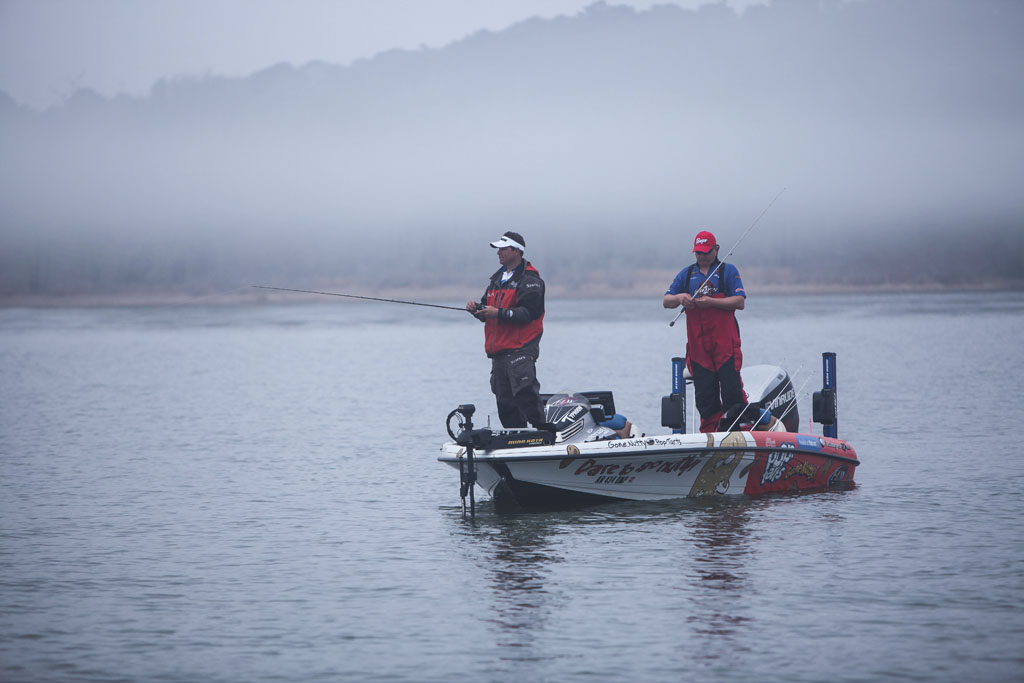Pro Tips Weekly: Greg Bohannon

Think Vertical for Winter Bass
The colder and nastier winter gets, the more any vertical cover such as bluff banks and standing timber comes into play. Fishing bluff banks during a hard snow has become a staple for smallmouths in Ozark lakes and their feeder rivers, but it also works in TVA lakes for largemouths and spots as well. Bass don’t eat as often or as much in the winter as they do when the water is warm, but they do eat, and bluff banks are one of the first places they go looking for food. There’s likely to be baitfish feeding on the algae that grow on the rocks. Likewise, crawfish tend to stay tucked away in the rocks just about any season of year.
The three types of lures that I use most of the time when I’m fishing bluffs are Storm Wiggle Wart crankbaits in a crawfish pattern, Megabass or Luck-E-Strike jerkbaits and jigs. The Wiggle Wart is my top choice because I can cover a lot of water with it quickly. Unless the rocks are sticking out everywhere and really rubbing the line, I’ll fish with 8-pound-test fluorocarbon to help the crankbait reach its maximum depth. I pair it with a 7-2 Denali Greg Bohannan Signature Series medium-action rod.
If the bass won’t chase the crankbait, I’ll slow down with a suspending jerkbait, and if they want something slower still, I’ll try a ½-ounce jig with a soft-plastic crawfish trailer because I want it to just drift down without flapping a lot. Then I work it as slow as I can stand.
The best bluffs have steps to them; that is, there will be rock shelves that stairstep down. When I’m fishing the crankbait, normally I’ll get bit when the Wiggle Wart ricochets off a rock. If I’m fishing the jig, a lot of times I’ll drop it pretty much straight down or else hop it down a rock wall. For the most part, though, I’m positioning my boat so that I can almost touch the bluff with the tip of the rod, and then casting parallel to the bluff. The fish tend to be focused on the rocks and you want to keep it in that strike zone as long as possible.
Normally, the best bluff banks have some transitions to them – say, from a pea gravel bottom that drops off quickly to a bluff. Like I said, there should be shelves at different depth intervals where fish actually position and feed. There might also be other protrusions coming out, like a rock slide or maybe an isolated tree that fell down. As a general rule, the best bluff banks are found with electronics, and not seen as you run down the lake.
I’ve noticed that, for some reason, largemouths and spots tend to be right against a bluff and you’re liable to catch them together a lot of times. With smallmouths, it’s more of a deal where they’re on the ends near the transition bottoms. In some cases you want to spend as much or more time fishing those ends rather than the main part of the bluff, but experience will tell you when and where you need to do that.